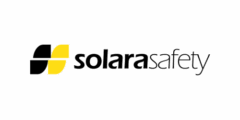When teams arrive at the scene of an incident – whether it’s a roadside collision, industrial hazard, or large-scale emergency – the ability to see and be seen is an absolute essential. Scene lighting is one of the most important elements of response readiness – and it’s not just about turning on a few floodlights. It’s about creating a safe, visible, and functional working environment in the most challenging conditions.
This article explores why effective scene lighting matters, the role it plays in protecting both crews and the public, and why it’s a growing focus in vehicle conversions, fleet specifications, and incident planning across emergency services.
Why Scene Lighting Matters
Visibility Creates Safety
The most obvious benefit of scene lighting is also the most important – it helps people see what’s happening.
In poor weather, at night, or in remote areas, responders may be working with near-zero visibility. As well as enabling teams to see the work they’re doing, effective lighting helps identify hazards such as spilled fuel, uneven ground, debris, cables, or vehicle fluids. It also allows teams to monitor their surroundings, watch for incoming traffic, and make faster, more confident decisions.
At the same time, scene lighting makes the response team itself visible to others – motorists, pedestrians, or supporting personnel. This protects crews from being injured by secondary collisions or accidental contact with heavy equipment.
It Defines the Working Zone
Lighting does more than illuminate. It shapes the scene.
A well-lit area creates clear boundaries – defining where responders are operating, where it’s safe to walk or drive, and where the public should avoid. It helps coordinate multi-agency response by giving everyone a shared visual framework, and it supports incident command by making the overall scene easier to monitor.
Good lighting also enhances task-specific visibility:
- Crews handling patients or casualties need targeted lighting that doesn’t cause glare
- Technical rescue or vehicle extrication requires beam control and focused coverage
- Utility and service teams need broad-area illumination for inspections, repairs, or containment
Better Light = Better Work
Emergency work is high-pressure. Crews are often cold, wet, fatigued, and operating in complex or unfamiliar environments. Poor lighting slows them down. It introduces risk, increases strain, and makes basic tasks – like identifying equipment, reading gauges, or locating tools – harder than they need to be.
The right lighting reduces mental and physical fatigue. It makes manual work more efficient, allows more people to operate safely in parallel, and reduces the time needed to complete critical tasks. This has knock-on benefits for everyone – from patient outcomes and crew wellbeing to overall incident clearance times.
Scene Lighting Solutions
The Role of Scene Lighting in Modern Fleet Specification
As vehicle conversions become more advanced, scene lighting is being integrated into build specs from the outset. It’s no longer treated as an afterthought. Vehicle designers are increasingly considering:
- Placement: to avoid shadowing and ensure full scene coverage
- Beam pattern and colour temperature: for comfort, clarity, and compatibility with bodycams or sensors
- Mounting flexibility: allowing lights to be repositioned, angled, or detached
- Power draw and system integration: ensuring compatibility with onboard systems and avoiding electrical strain
- Weight and footprint: particularly for rapid response vehicles or specialist units
Effective lighting choices are being made not just for how bright they are, but for how well they support the operational needs of the crews using them.
It’s Not One-Size-Fits-All
No single lighting product can solve every need. That’s why scene lighting is best thought of as a layered system. In many cases, teams require a combination of:
- Vehicle-mounted lighting to provide perimeter coverage or fixed scene illumination
- Portable lighting that can be moved into position or placed at ground level
- Low-profile perimeter lighting to define vehicle zones without creating glare
- Task-specific work lights with directional control and variable output
This layered approach ensures the right kind of light is always available – whether the team is unpacking equipment, entering a confined space, or simply creating a safe zone to operate within.
Lighting Solutions That Support Safer Scenes
When building out a lighting spec, the best setups combine vehicle-mounted, portable, and task-specific lighting in one cohesive system. Here are four product ranges that offer just that – each designed to solve different scene lighting challenges without compromise.
 |
Vehicle-mounted performance, built for real-world use.Night Owl® Classic Mast SystemWhen scene lighting needs to be built into the vehicle itself, the Night Owl Classic delivers. This robust, retractable roof-mounted lighting mast extends to over two metres in just 12 seconds and offers a choice of 2 or 4 Pioneer Plus LED lightheads delivering up to 40,000 lumens of output. Each mast system is constructed from stainless steel and designed with roof-mounting in mind, helping minimise vehicle damage during installation. Once deployed, the mast can rotate 350 degrees, with full cyclic control of left, right, or all-round illumination via a waterproof operator handset. The unit operates from the vehicle’s own battery, with optional compressor and air regulator systems built-in. From major incident response to routine roadside deployment, the Night Owl is built to perform – reliably, consistently, and fast. |
Portable. Glare-free. 360 Visibility.Woodway Balloon LightsFor portable, high-impact illumination, our Balloon Lights offer a practical and efficient alternative to harsh floodlights or conventional tower lights. Each unit features an LED panel light surrounded by an inflatable nylon balloon. Once powered on, the cover inflates using internal cooling fans, creating a glare-free, 360-degree light source ideal for construction, emergency, and search and rescue use. The result is omnidirectional light that reduces shadowing and protects crews from eye strain – whether you’re working roadside or deep into a confined zone. Available in four sizes (Tiny, Mini, Midi, Maxi), they can be mounted on tripods or trolleys and deployed within seconds, making them a fast, flexible option for temporary scenes or mobile crews. They’re also energy efficient and connect easily to generators or standard vehicle power. |
 |
 |
 |
WhelenPerimeter LightDesigned to illuminate the immediate ground area around emergency and utility vehicles, the Whelen Perimeter Light is an excellent way to clearly define working zones without glare. These low-profile, high-output lights project a consistent beam downward, improving safety during entry/exit, equipment access, and side-of-road work. |
Solara SafetyCiriusSolara’s Cirius Work Lights are compact, high-performance task lights that combine solid-state reliability with real-world practicality. Available in two sizes – 3″ and 4″ – they deliver up to 4,000 lumens of evenly diffused light, with an IP69K-rated body and stainless steel mounting. Optional handle and bracket configurations make installation and adjustment easy. |
When scene lighting is properly thought through, the difference is noticeable. Crews move with more confidence. The scene becomes easier to manage. The risk to personnel and the public decreases. And in many cases, tasks are completed faster, with better results. So it’s no coincidence that the services with the most mature vehicle specs also tend to take lighting seriously.
















